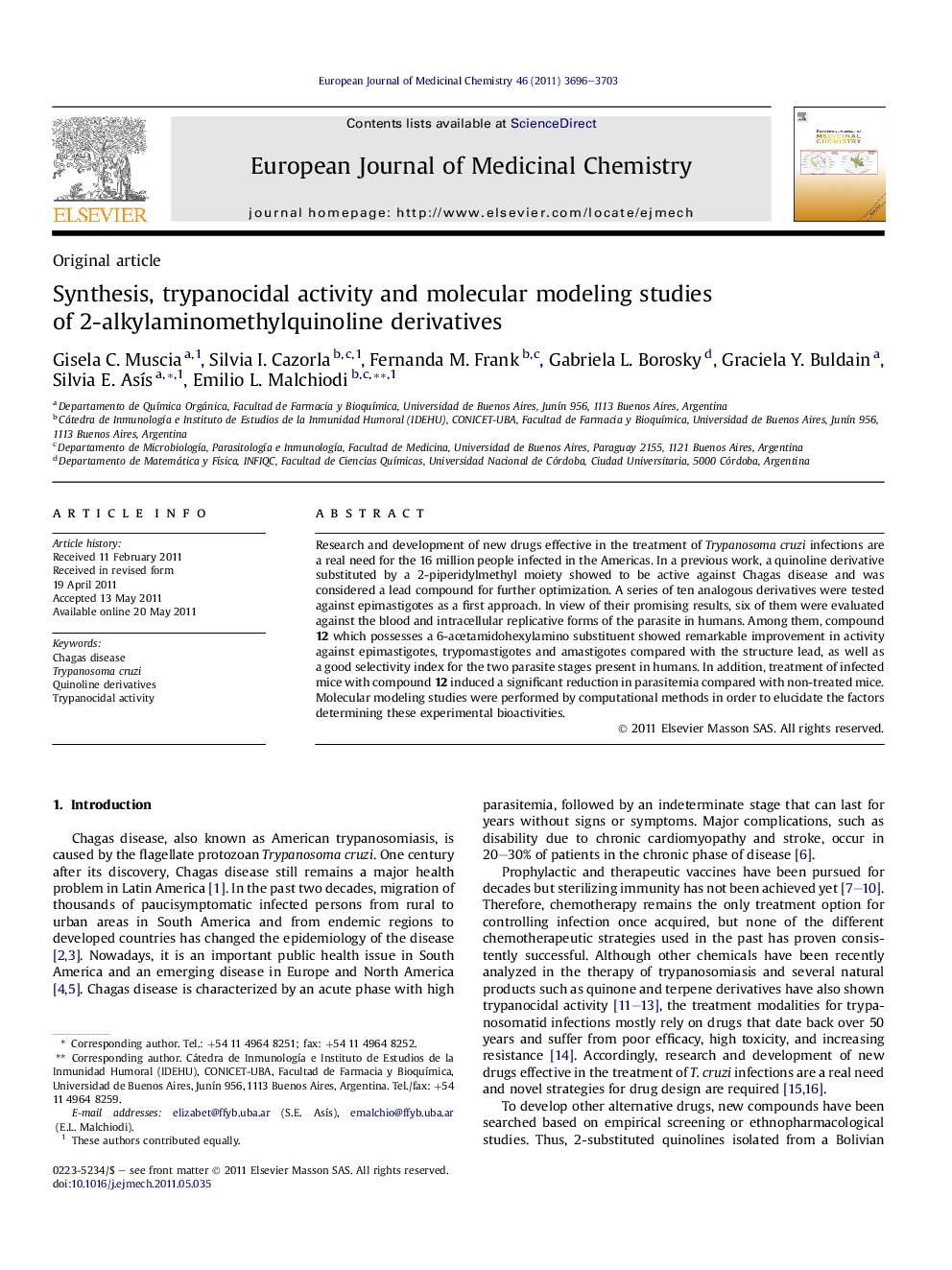| Article ID | Journal | Published Year | Pages | File Type |
|---|---|---|---|---|
| 1396129 | European Journal of Medicinal Chemistry | 2011 | 8 Pages |
Research and development of new drugs effective in the treatment of Trypanosoma cruzi infections are a real need for the 16 million people infected in the Americas. In a previous work, a quinoline derivative substituted by a 2-piperidylmethyl moiety showed to be active against Chagas disease and was considered a lead compound for further optimization. A series of ten analogous derivatives were tested against epimastigotes as a first approach. In view of their promising results, six of them were evaluated against the blood and intracellular replicative forms of the parasite in humans. Among them, compound 12 which possesses a 6-acetamidohexylamino substituent showed remarkable improvement in activity against epimastigotes, trypomastigotes and amastigotes compared with the structure lead, as well as a good selectivity index for the two parasite stages present in humans. In addition, treatment of infected mice with compound 12 induced a significant reduction in parasitemia compared with non-treated mice. Molecular modeling studies were performed by computational methods in order to elucidate the factors determining these experimental bioactivities.
Graphical abstractSynthesis, trypanocidal activity and molecular modeling studies of 2-alkylaminomethylquinoline derivatives.Figure optionsDownload full-size imageDownload as PowerPoint slideHighlights► We synthesized derivatives of 2-alkylaminomethylquinoline analogous to a leader. ► Six derivatives were active against replicative forms of T. cruzi in humans. ► Molecular modeling suggests that the IC50 values could be governed by steric effect. ► Compound 12 can be a new leader due to its activity and good selectivity index. ► Compound 12 significantly reduced parasitemia in a model of acute infection.
